Watch out for oak wilt disease, says Shade Tree Commission
The disease is preventable and treatable, and the Commission explains how.
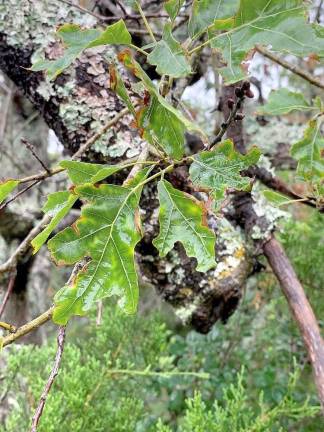
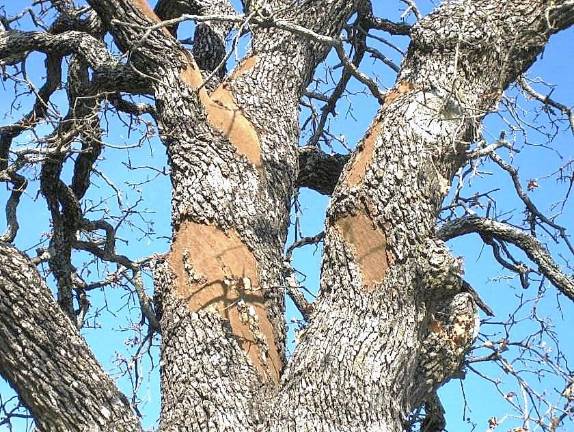
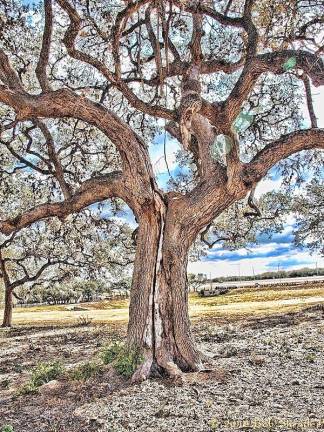
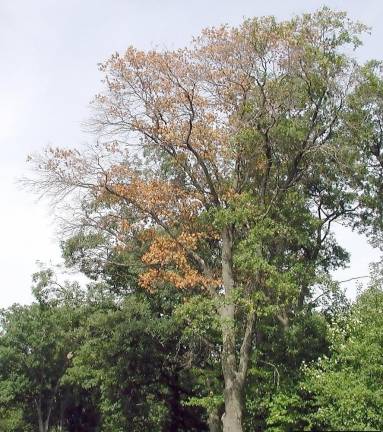
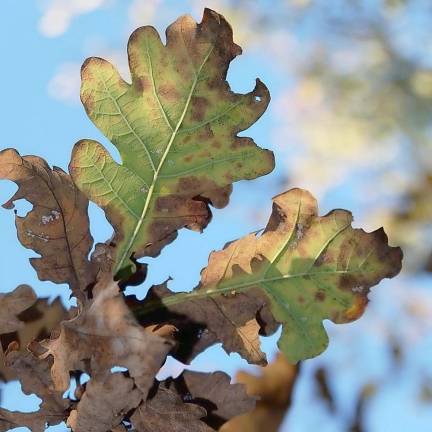
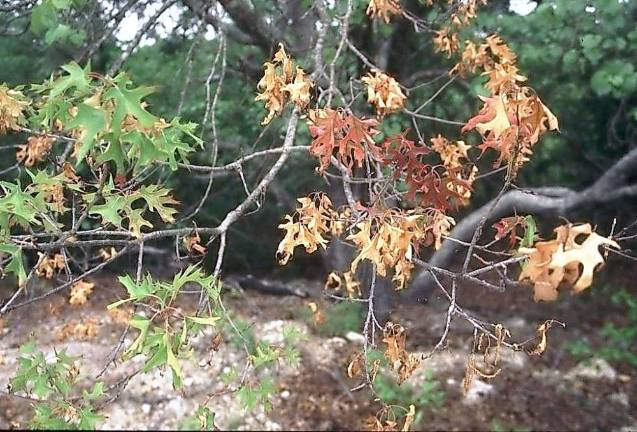
Destructive oak wilt disease has begun appearing in the Village of Warwick but is preventable and treatable, says Shade Tree Commissioner Rob Scheuermann and his colleagues. The disease mostly affects Red and Live Oaks, preventing the tree from dispersing nutrients and water throughout the tree’s branches and leaves.
These are typical symptoms:
Discoloration, curled or wilted leaves
Complete leaf drop often occurs by mid-summer
Dead crowns
Tree looks almost dead
Vertical cracks in the bark with mat-like fungal spores underneath; the bark swells and eventually ruptures
Sap beetles feed on the fungal mat, spreading the disease further
Red Oaks, such as scarlet oak, pin oak and black oak, can die within a few weeks to six months, and the disease will spread quickly from tree to tree. Red Oaks will develop an overall reddish appearance to their leaves. The common discoloration of the infected foliage can range from yellow to brownish tones.
White Oaks, including bur and chestnut oak, often take years to die, and the disease usually can not spread to additional trees.
Oak wilt spreads two main ways: 1) above ground beetles 2) below ground through tree roots.
The Commission recommends avoiding “injury” of oaks, including pruning, between April and August. They suggest that pruning time be extended to the end of October, as the oaks will be less susceptible to the beetle and spread of disease as they move into their dormant period. That means no pruning during those months and careful maneuvering with a lawnmower and power tools. If an oak is injured during this time, you should:
1) Support the tree in it’s healing by minimizing the stress. Cut the broken limb just outside the branch collar to preserve the tree’s immune response.
2) Ensure the tree has adequate water and nutrients.
3) Do not dress the wound; it will heal on its own. If you dress the wound, it won’t be able to compartmentalize and will be vulnerable to disease with no ability to protect itself.
If the wound is severe or there are other trees in the area with oak wilt, a preventive treatment of fungicide may be a good idea. Scheuermann can make a recommendation for your tree.
The Commission also warns against transporting firewood of unknown origin. Fresh firewood from infected trees can pose a danger to other trees because it might still contain live fungus. As an additional precaution, do not store fresh firewood near oak trees, and cover the firewood tightly with tarps. The fungus cannot survive in dry firewood, and burning cannot transmit the disease.
If you think your oak may have oak wilt, call the Village Shade Tree Commissioner, Rob Scheuermann to confirm that your tree has this disease and to determine the best way to contain and remove the tree from your property. If you have an oak tree that you believe has died of oak wilt, this should be confirmed by the Village Shade Tree Commissioner and noted for the state to keep track of the disease. The tree should be removed promptly to prevent the disease from spreading.